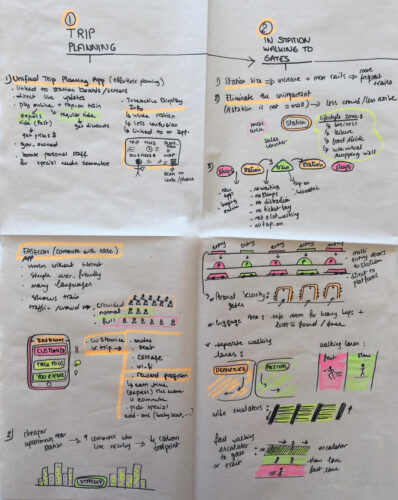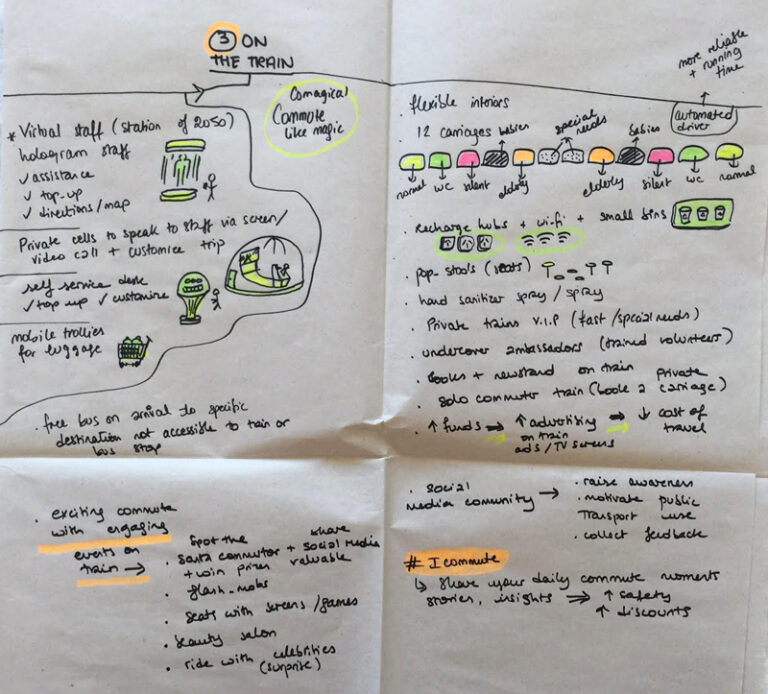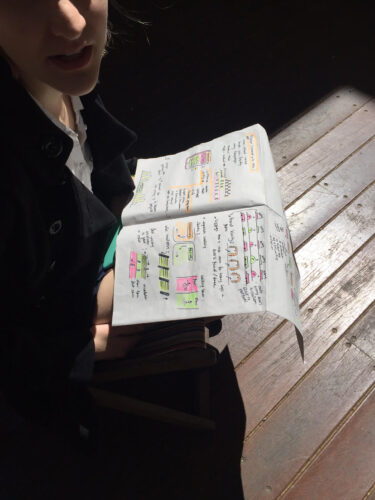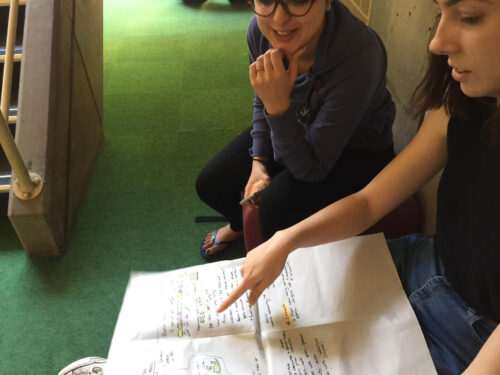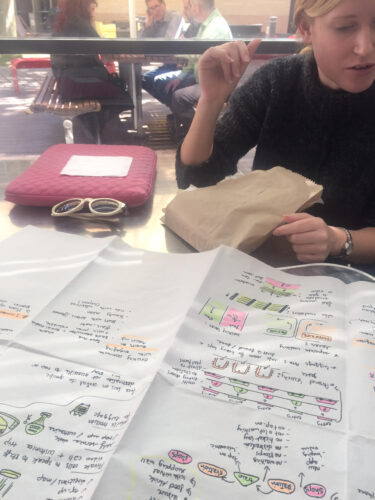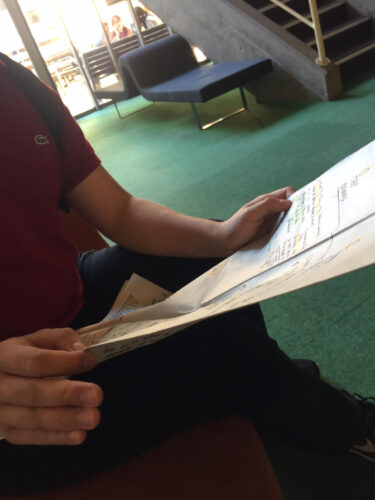
Designing an Efficient Transport System for Sydney
UTS Masters Project for the Federal Government - Office of Service Transformation (OST)
The project in numbers
50+ Interviews with students, staff and citizens
20+ Prototype Interviews
15+ Ideas formed from key opportunity spaces
Country
Australia
Overview
OSTs aim is to improve the way that the government delivers services to the public using a service design approach. The OST has approached me at UTS, as a service design professional, to help them with two tasks as part of my Masters Studies. The main target group in this study is students.
Goal
The main goal was to help OST better understand and design for Public Transport. In addition, to help OST build their internal design capabilities within the department by clearly articulating my process, insights, learnings and plans on a regular basis and by providing useful documentation of the design findings and recommendations. In doing so, we aim to change the behavior of commuters to the CBD central area – those using the Central Station – into: putting down their car keys and using public transport. Noting that the Sydney NSW area has the highest car ownership levels per household in Australia.
Outcome
A proposal which includes the introduction of a Unified Trip Planning app offering express or regular rides, a reward program plus the ability to book seats and carriage types such as family-friendly online, all using a card or smart phone.
A Service Concept focused on simplifying the interior space of stations to provide an easier flow of traffic, with multiple entry and exit points directly from each individual platform, plus fast and slow walking lanes.
My Role
Service Designer
Methods
Generic Desk research, basic paper prototyping, audio recording, in-depth interviews, surveys, ideation, Double Diamond Design Methodology, synthesis wall, brainstorm, journey map, service blueprint, service offering, prototype.
Tools
Figma
Adobe Programs: Illustrator, InDesign, Photoshop, Acrobat
Year
2016-2017
Learn More:
The Full Case Study PDF is available upon request.
Research
The research started with the “Understand” phase whereby questions were asked to commuters about their experience in Sydney’s train stations and transport in general, the pain points, the advantages and whether their needs are being met.
The pain points were divided into Tangible and Intangible groups.
A Journey Map was devised to illustrate the commuter’s path within Central Station at different points of the Service Experience.
The Research gave insight into the Future State of the experience and the Goal: Going from an unpleasant, rushed experience into a smoother one. After the Research and Exploration phases, a list of needs that commuters have and are missing was devised. In the Deliver phase, those needs were addressed by creating Concepts based on extracted Design Principles to shape the Future State of the Station Experience in Public Transport.
Insights
From all the data gathered, I identified six key insights and design principles:
1. Convenience & User-Friendliness
2. Time-saving, Speedy and Frequent
3. Effortless Proximity
Commuters complained about how timings change last minute and many times the apps they have and the train station screens do not match. This causes much delay, stress and confusion in their daily journeys. They also wish they can reach their destinations faster and have more choices in terms of routes. Also, they wish there are discounts and ways to benefit from traveling more. Crowded trains are not pleasant as they cannot always sit and they can barely get work done as they run out of battery or phone data.
Commuters sometimes do not find instant staff around to help them when confused or have questions. Sometimes they have to walk to find a staff because they stand only in specific points in the station and not everywhere.
Commuters complained about how noisy and crowded stations can be. Also, walking among slow people is an issue that delays them. Walking in general within stations is unpleasant especially when heading to a far platform.
Commuters sometimes carry heavy bags which makes it more unpleasant. A lot of times people arriving and departing bump into each other creating more chaos and crowd.
Commuters are on board minimum twice a day for work and sometimes even on weekends for outings. They need to feel pleasant on board with clean surroundings and flexible interiors that allows them to work also as they commute. They have different needs and the latter are not always met in a Public environment.
Commuters have a lot of needs and sometimes issues to comment on. They feel belonging to a community will help improve transport and they want to be part of the solution and provide their ideas too. They also want to feel safe and secure while commuting.
Ideation & Service Concepts
After listing 10 Key Moments, the ideation process was initiated and divided into 3 Journey Steps including several ideas within each of them.
1. Trip Planning, buying & paying
2. Inside the Station while heading to the gates
3. On the train
To create the Future State based on the needs of commuters and the Design Principles established, the first draft of ideas was shared with 8 students, employees, business owners, couples with children and housewives.
The collected feedback was then considered and a new draft of filtered ideas was represented to 8 more. The result of the second round of feedback was a refined Future State with solutions that cater to the commuter. Briefly, commuters focused on keeping the high priority solutions that can be implemented from now.
Key learnings
Design has the capacity to change environments and processes to serve humanity and the public in a more efficient way. It was very challenging to just stop people on their way out or into the station… especially when they are in a hurry… in order to ask them a few questions or let them interact with the prototype I had devised. Voice recordings had to be authorized; so I showed them my ID and ensured that their voice won’t be used anywhere – it is solely for research purposes.
“Design thinking is an intensely human process, which is why it is so culturally dependent – it progresses to technical and financial viability only after considering the human aspect.” – Catherine Livingstone












